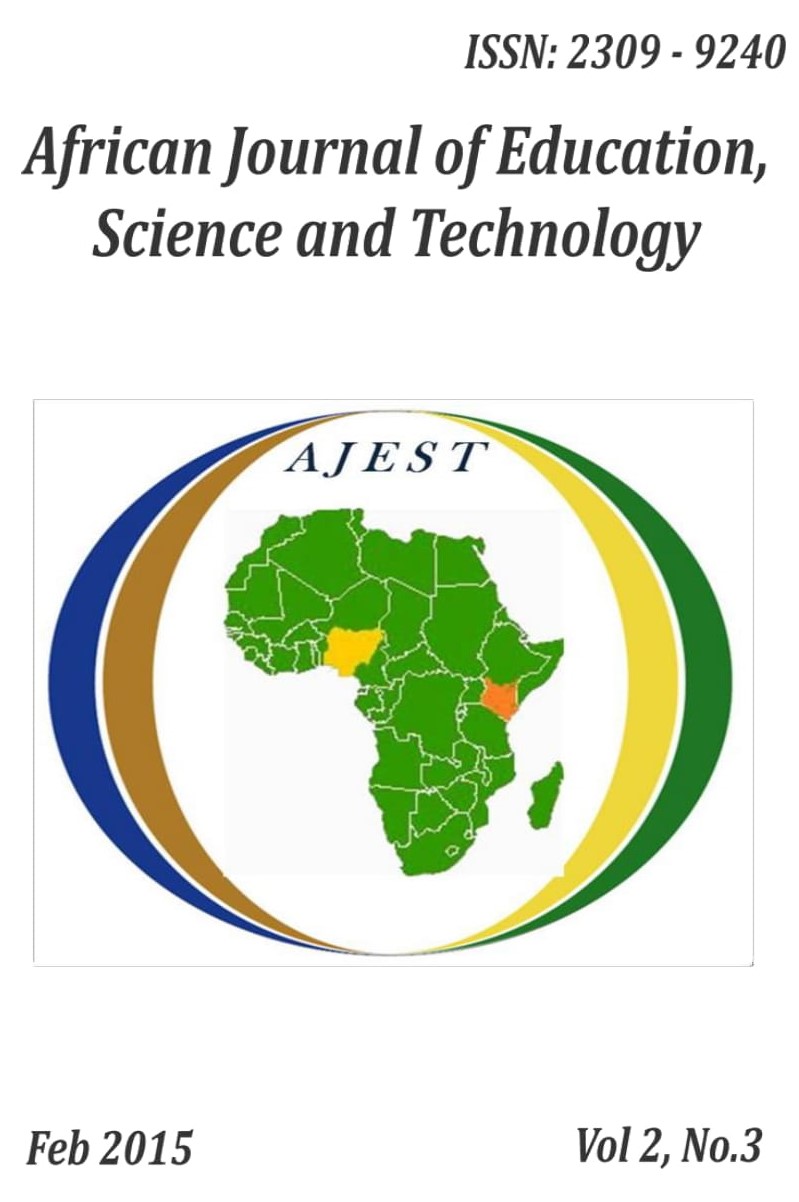Trends in HIV/AIDS Infection and Sexual Behaviour Change among Teacher Trainees: A Study of a Teacher-Training College in Western Kenya
##article.abstract##
The available information indicates that so far there is no conclusive cure for HIV/AIDS. The approach taken by various stakeholders to reduce HIV infection do not seem to impact on behaviour change especially among young people (Kenya Aids Indicator Survey, 2007). This study sought to find out whether young people are responding appropriately to sexual behaviour change messages. The study was informed by Rosenstock‟s Modified Health Belief Model (1974). A total of 216 student-teachers were purposively selected. Both survey and causal comparative research designs were adopted. Questionnaires and Focus Group Discussions were used to generate data which was analyzed using descriptive statistics. The study revealed that all the respondents are aware of the most common mode of transmission of HIV infection as sexual intercourse. There was a significant relationship between: year of study and current involvement in sexual relationship; Voluntary Counselling and Testing visits and consideration in choosing sexual partners.
References
Best, W. J., & Khan, V. J. (1984). Research in Education (6th ed.). New Jersey: Prentice Hall Inc.
KAIS (2007). Ministry of Health – Kenya (July 2008) Kenya Aids Indicator Survey.
Kamaara, E. (2005). What is HIV/AIDS? A paper presented at the HIV/AIDS Awareness seminar, Moi University. (Unpublished).
KDHS (2003). Kenya Demographic and Health Survey: A publication of the Central Bureau of Statistics and Ministry of Health; Nairobi Kenya.
Kenya Institute of Education (2003) Report on AIDS & counselling in schools. Nairobi: Kenya Institute of Education.
KNUT (June-July 2008). Education Watch. A teachers‟ Service Commission Magazine. Nairobi, Kenya:
Government Printers
Kothari, L.R (2007). Research Methodology and Techniques. New Delhi: New Age International Limited.
Ministry of Education, (2001). Education for All (EFA) in Kenya: A National Handbook on EFA 2000 and beyond. Nairobi Government Printers.
Mugenda, M.O., &Mugenda, G.A, (2003). Research Methods: Qualitative & Quantitative Approaches.
Nairobi, Kenya: Acts press
NASCOP (2001). Kenya AIDS Newsletter. A Publication of ministry of health.
NASCOP (2006). Kenya AIDS Newsletter. A Publication of ministry of health. Nairobi, Kenya.
NASCOP, (Feb, 2007). Skills training in provider initiative, HIV testing and counselling in the clinical setting, Nairobi, Kenya: Ministry of health,
Population Council, DFID and Constella, (March 2007). Population Council, DFID and Constella, Office of the Vice President, Kenya.
Population Report (1989). AIDS Education. A Beginning. In: Issues in World Health. XVII.3. The Johns Hopkins University PIPCC Programs pub.
Republic of Kenya (2000). Kenya National HIV/AIDS strategic plan: National AIDS control council. Nairobi:
Government.
Rosenstock, I. (1974). Historical origins of health belief model. Education Monographs 2(4).
Rosenthal, D., Moore, S., & Brumen, I. (1990). Ethnic group differences in adolescents. Australian. Journal of Social Issues 25,220-39.
Sindiga, I., & Lukhando, M. (1993) Kenyan University students views on AIDS, in East Africa Medical Journal.
Shiphra, N., Ruth, M., Mwaura, M., Kioko, M., &Mambo, M. (2006). Secondary Christian Religious Education: form four. Nairobi: Kenya Literature Bureau.
UNAIDS (Dec. 2003) AIDS Epidemic updates, Geneva: UNAIDS.
UNAIDS (2003). Accelerating Action Against AIDS in Africa.Geneva: UNAIDS. UNAIDS (2000b) Report on
the global HIV/AIDS epidemic. Geneva: UNAIDS.
UNAIDS (2004). Report on Global HIV/AIDS epidemic. Geneva: United Nations.
UNAIDS, UNICEF and WHO (2002). Young people and HIV/AIDS: opportunity in crisis. Geneva: UNAIDS.
World Bank (2005). Preventing HIV/AIDS in Middle East and North Africa, a Window of opportunity to Act. Washington, D.C.: World Bank Publication


